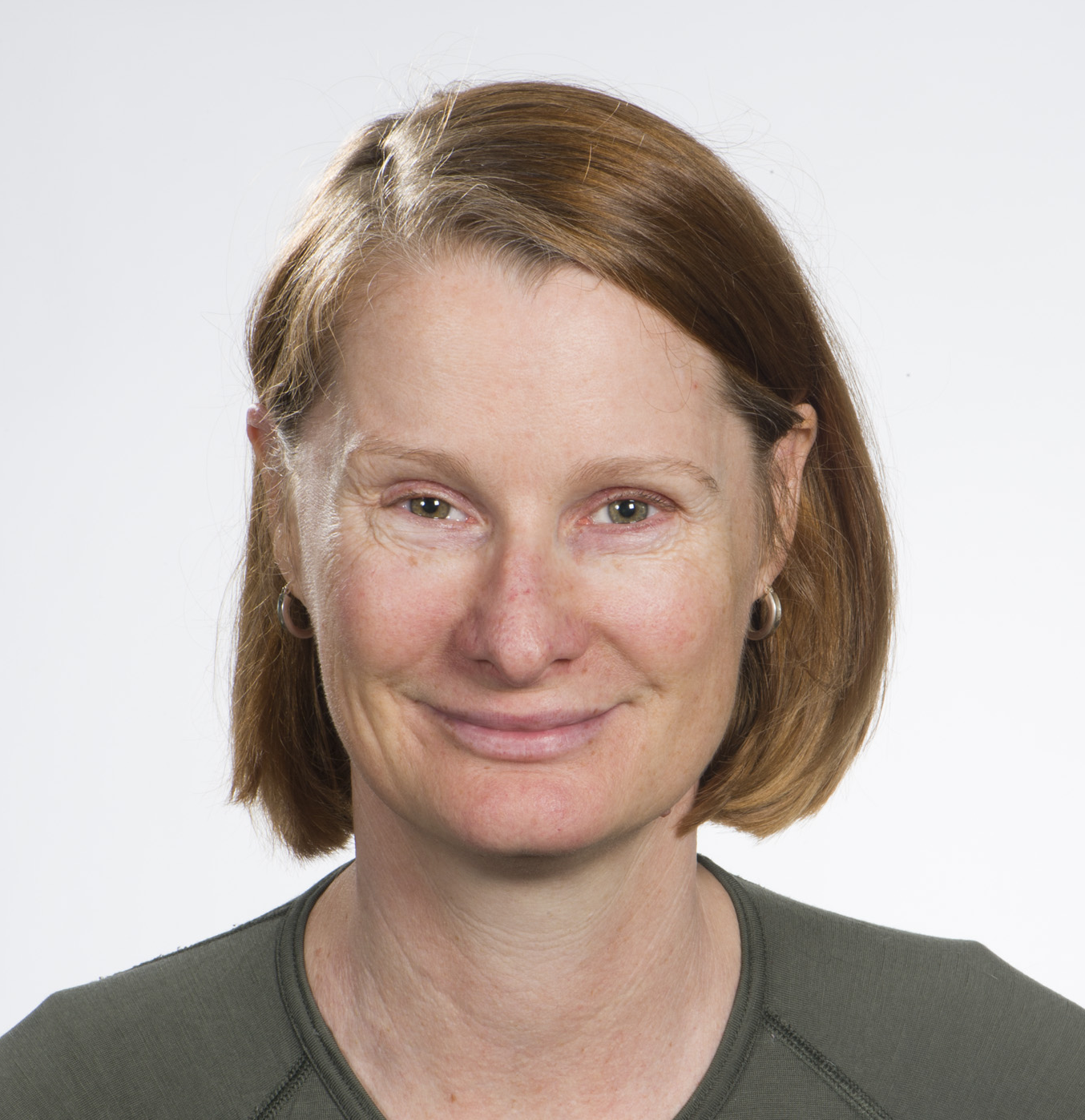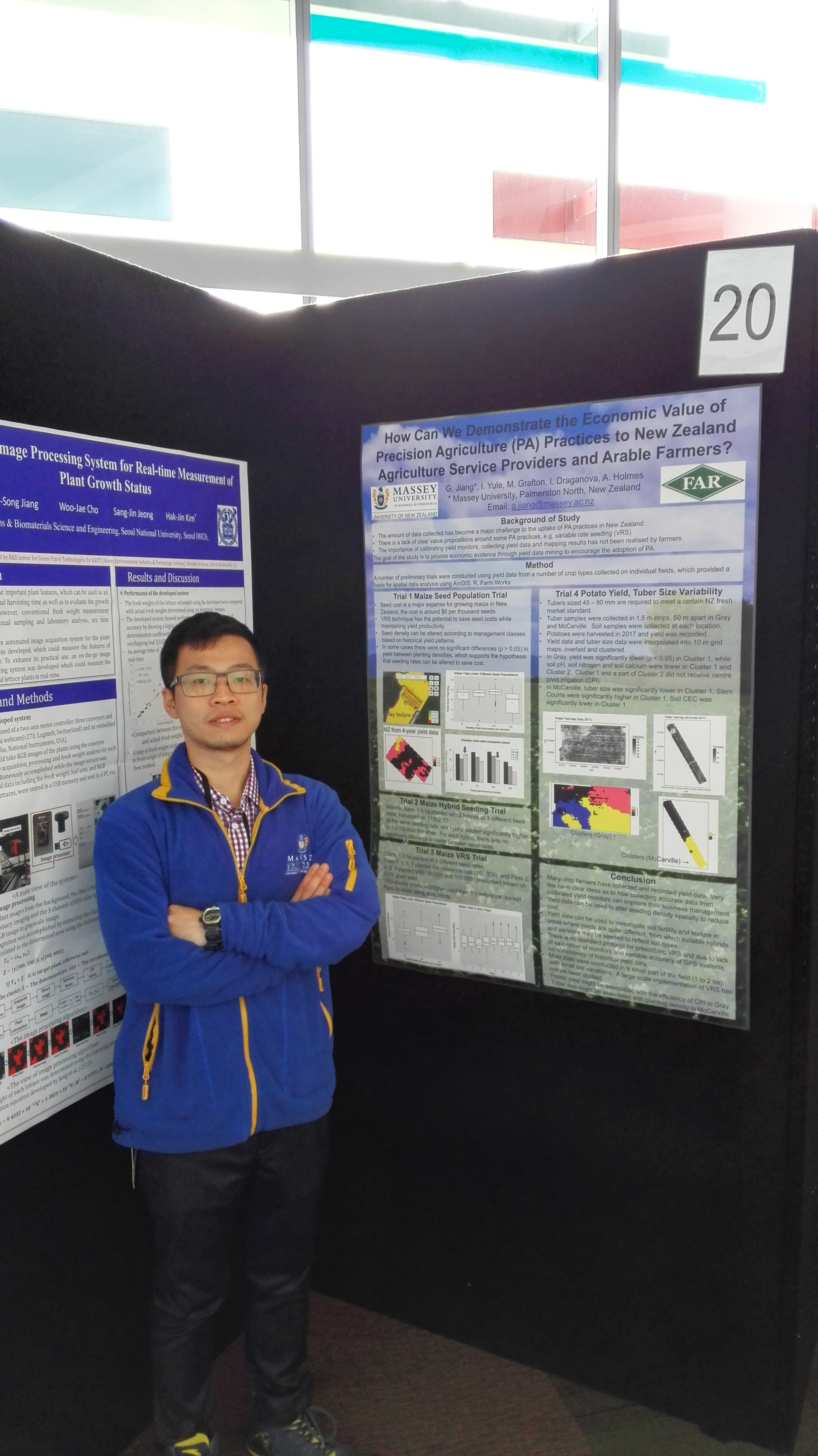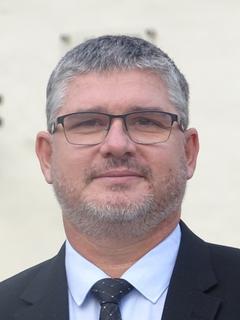
Date: Tue Jun 26, 2018
Time: 1:15 PM - 3:00 PM
Moderator: David Mulla
The soil apparent electrical conductivity (ECa) has been highlighted in the literature as a tool with high potential to map the soil fertility of fields. However, sugarcane fields still lack results that show the applicability of this information to define the soil spatial variability and its fertility conditions. The objective of the present paper was to provide a comprehensive assessment of the relationship between ECa, evaluated by electromagnetic induction (EMI) sensor, and the spatial variability of clay content, organic matter (OM) and cation exchange capacity (CEC) in sugarcane fields. Six experimental sugarcane fields were evaluated, totaling 412 hectares mapped and 2,000 soil samples collected between 2011 and 2017. The results showed that ECa was able to map sites with higher clay content, OM and CEC, corresponding to classes of greater soil electrical conductivity. Low ECa classes presented greater spatial variability of the evaluated soil attributes, being places that should be sampled with greater accuracy, that is, with a higher sample density for a suitable soil spatial characterization. The ECa variability was directly proportional to clay content (R2= 0.97), OM (R2= 0.65) and CEC (R2= 0.76) variabilities, where 1.0 mS m-1corresponded to 1.5 g kg-1, 0.11 g dm-3and 0.24 mmol dm-3of clay content, OM and CEC, respectively. The EMI sensor is an excellent tool to define the spatial variability of soil fertility and could be used for a guided soil sampling to manage the sugarcane fields in an adequate sustainable way.

Investigations on soil spatial variability and precision nutrient management based targeted yield approach in maize was carried out at Agricultural research station (ARS), Mudhol (Karnataka), India under irrigated condition during 2013-14, 2014-15 and 2015-16. ARS, Mudhol is located in northern dry zone of Karnataka at 160 20! N latitude, 750 15! E longitude and at an altitude of 577.6 meter above mean sea level. To assess the spatial variability, the study area was divided into 20 x20 m size grids and subjected to soil nutrient analysis. Spatial variability of available nitrogen, phosphorus and potassium was assessed and soil fertility map was prepared. Management zones were delineated based on soil fertility status as LMH and LHH by using nearest neighborhood technique. Five target yields - 60, 80, 100, 120 and 140 q ha-1 were evaluated with RDF and absolute control in the designated management zones. Nutrient prescription maps were generated based on site specific nutrient management concept and target yield. Nitrogen was applied in five splits (10, 20, 30, 30 and 10 % each at basal, 20 (V5), 35 (V10), 50 (V14) and 65 (R1) days after sowing, respectively) as per recommendations. The entire dose of phosphorus and potassium was applied as basal. Treatments differed significantly with respect to precision nutrient management through target yield approach. Significantly higher SPAD chlorophyll readings (57.6) and NDVI values (0.58) were recorded with target yield of 140 q ha-1 over target yield of 60, 80 q ha-1, RDF (49.7 and 0.47, respectively) and absolute control (28.9 and 0.19, respectively) at 60 DAS. Target yield levels achieved with 60, 80, 100, 120 and 140 q ha-1 treatments were 78.6, 88.0, 112.9, 117.6 and 127.4 q ha-1 in LHH management zone and 76.5, 87.9, 101.4, 115.0 and 126.9 q ha-1, respectively in LMH management zone whereas, absolute control recorded significantly lower grain yield (27.7 q ha-1). Target yield of 60, 80, 100 and 120 q ha-1 were achieved over the years irrespective of management zones. Nutrient dynamics in soil indicated net gain in N and K and net loss of P in all target yield treatments

Worldwide, nitrogen (N) and phosphorus (P) losses from agriculture are main contributors to eutrophication of water bodies so that forceful agro-technical measures are required to reduce their diffuse discharge to the environment. With view to worldwide finite mineral rock phosphates efficient standards are required to close the agricultural P cycle. In intensive agricultural livestock production manure is often treated as a waste problem rather than an organic fertilizer and source of nutrients. Consequently, application rates of manure are not based on a documented demand of nutrients, but fully exhaust the maximum legal output quantity. However, even if maximum manure loads will not exceed an upper limit of 170 kg/ha N, its use is not sustainable as it exceeds the mean P off-take of 22 kg/ha P by agricultural crops with harvest products by 95% to >120% if pig and poultry manure are applied. A solution to the problem offers the limitation of manure rates on basis of P loads that equal the off-take. This simple math stresses the urgent need to revise current practices of manure application and to focus on innovations in the production and recycling chain of manure and slurries. In general, the implementation of Codes of Good Agricultural Practice (GAP) on farms is recommended to reduce the pollution from agricultural activities. Variable rate application of fertilizers complies with GAP codes as it matches the small-scale variation of plant available nutrients in soils with the nutrient demand of crops. It is intrinsic that such site-specific nutrient management complies with a sustainable input of resources that favors crop growth and minimizes negative impacts on the environment. Algorithms for the continuous variable rate input of straight and compound mineral fertilizers, and farmyard manure have been developed. The present contribution demonstrates the problem of P accumulation in soils of livestock farms, addresses the spatial variation of plant available P in soils, and provides algorithms for a balanced, variable rate fertilization of manure.
Agricultural research in broadacre farming in Western Australia has a strong history, resulting in a significant public resource of knowledge about biophysical processes affecting crop performance. However, translation of this knowledge into improved on-farm decision making remains a challenge to the industry. Online and mobile decision support tools to assist tactical farm management decisions are not widely adopted, for reasons including: (1) they take too much time and training to learn; and (2) they aren’t integrated with the data they need or with each other, making their use too time-consuming.
Meanwhile, as farmers accumulate more data from their machinery, they find themselves unable to use that data to inform decision making. In an ideal future, variable rate technology (VRT) could be programmed to apply optimal rates of fertilisers. However, the existing suite of models and tools are derived from small-scale controlled field experiments and are not suitable for fine-scale paddock management.
Using 14 years of data from a farm in the eastern wheatbelt of Western Australia, we investigate the calibration and extension of an agro-economic model for spatial prediction of the effects of nitrogen applications on wheat yield and gross return. We use a simple response curve model, NP-Decide, that was developed in Western Australia and remains in common use.

.jpg)
Precision agriculture (PA) tools and techniques have been used in New Zealand (NZ) since the early 1990's. There has been wide-scale uptake of some PA tools such as autosteer; planter and sprayer section control; and variable-rate irrigation. However, there has been a limited uptake of Site-Specific Crop Management (SSCM) using variable-rate seeding, nutrient and lime applications to different Management Zones (MZ).
This paper outlines examples of the use of SSCM on maize crops, and the effect on whole-paddock profitability of the resulting crop, as well as the sustainability of crop production measured using metrics such as nitrogen leaching.
Hybrid maize seed in NZ is approximately double the price than in North America, and as such the potential benefits to growers using variable-rate seeding (VRS) are significant. However, VRS has not been undertaken in commercial maize crops in New Zealand. Two trials carried out in the 2015/16 growing season showed that the use of SSCM and VRS can provide a relatively simple, practical way of improving maize crop gross margin; in this case by an average of NZ$96 per hectare. Targeting different maize yields to different MZ is a valuable tool to minimise losses due to nutrient over-supply to poor performing zones in maize crops. Nitrogen leaching losses could be reduced from up to 150kg N/ha in parts of the paddock to less than 10 kg N/ha using SSCM.
Spatial clustering analysis of the results established a good basis for site-specific management by identifying MZ. In conjunction with the growers’ knowledge, a practical analysis of crop agronomic decisions can be made based on geospatial crop and soil data to inform crop management decisions in the future.
SSCM is a practical tool to help manage variability in New Zealand cropping paddocks to improve profitability and reduce environmental impacts.

One of the primary objectives in the field of precision agriculture is weed detection. Detecting and expunging weeds in the initial stages of crop growth with deep learning technique can minimize the usage of herbicides and maximize the crop yield for the farmers. This paper proposes a sliding window approach for the detection of weed regions using convolutional neural networks. The proposed approach involves two processes: (1) Image extraction and labelling, (2) building and training our neural network. In the image extraction process, sub-images are extracted by slicing the original images into sub-images. Subsequently each sub-image is labelled based on the given annotation images. In the next process for building the network architecture, convolutional neural network model is implemented with 20 layers consisting of one image input layer, four 2-D convolutional layers, six rectified linear unit (ReLU) layers, four 2-D max pooling layers, three fully connected layers, one softmax layer, and one final classification layer. Various collections of sub-images gathered by various sliding window sizes were passed into this network to determine the best sliding window size that resulted in higher true weed detection rate and lower percentage of crop wastage. After the ratios between true weed detection rate and crop wastage values were computed for each sliding window sizes, it was found out that the sliding window size of [80 80] resulted in the maximum ratio with true weed detection rate and crop wastage values of 63.28% and 13.33% respectively. These findings reveal that the sliding window size of [80 80] was able to predict the true weed regions in the crops field imagery with 63.28% accuracy that causes least damage to the crops due to predicting crops as weeds.
Variable Rate Technology (VRT) in seeding and nutrient management has been developed in order to apply crop inputs variably. Farm equipment is widely available to manage in-field variability in Hungary, however, defining management zones, seed rates and amounts of nutrients is still a challenge. An increasing number of growers in Hungary have started adopting precision agriculture technology; however, data on profitability concerning site-specific seeding and nitrogen management is not widely available. The objective of our work and this paper was to investigate the effect of variable rate seeding and nutrient management in a 92-hectare field planted with corn (Zea mays L.) where site-specific management had not been applied earlier. Management zones, seed and nitrogen variations had to be defined for the first time in the experimental field. Based on long-term remotely sensed data, 3 ha average management zones were determined for soil sampling. After sampling and laboratory analysis, seed rate and nitrogen recommendations were given to the farmer. Seed rates were determined based on the hybrid potential as well as the experience of the grower in the investigated location. Variable rate seeding was carried out by means of a John Deere 1775ND 12 row planting machine. Seed rates were determined between 65 and 82 thousand seeds per hectare. VRT nutrient management was limited to differences in nitrogen head fertilizer only, as soil sampling was carried out in the springtime. Variable rate nitrogen fertilizing was carried out by means of a Kverneland Exacta TL Geospread machine. The head fertilizing rate varied between 80 and 140 kg per hectare of carbamide. Despite dry climatic conditions with no precipitation in the optimal time period, yield and profitability increased. Lack of precipitation limited the efficiency of the variable rate nitrogen head fertilizing, however, all 34 management zones produced a profit in the experimental field.


